Orange County
Sphingidae
Eumorpha achemon, fourth instar larva, June 25, 2005
Lake Elsinore in nearby Riverside County, courtesy of Peter Sidoruk.
|
|
Updated as per James P. Tuttle's The Hawk Moths of North America, May 6, 2010 Updated as per personal communication with Jordan Craig, May 6, 2010 Updated as per personal communication with John Prince, April 19, 2012 Updated as per personal communication with Joyce (Brea, Manduca sexta; May 4, 2014): May 5, 2014 Updated as per personal communication with Alida Cervera (Eumorpha achemon, Laguna beach, July 8, 2014); July 10, 2014 Updated as per personal communication with Monika Burke (Smerinthus saliceti, San Clemente, August 4, 2016); August 5, 2016 |
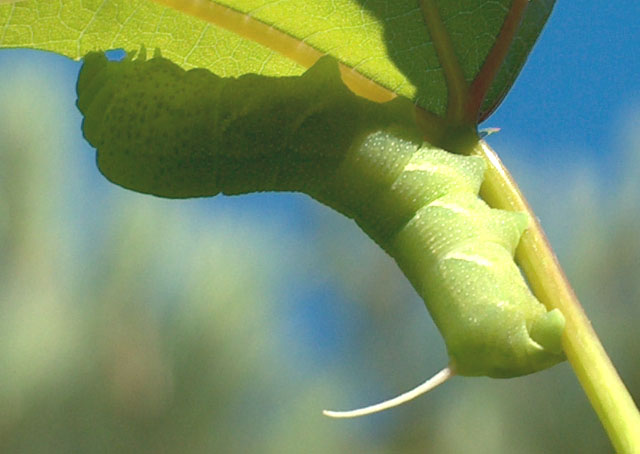
Eumorpha achemon, fourth instar larva, June 25, 2005
Lake Elsinore in nearby Riverside County, courtesy of Peter Sidoruk.
It is hoped that this checklist, with the thumbnails and notes, will help you quickly identify the moths you have encountered.
A WO" after the species name indicates that I have no confirmed reports of this species in Orange County, but I (William Oehlke) expect that this moth may be present.
A USGS indicates the moth is reported on the USGS website (now BAMONA) and/or in Moths of Western North America, #2. Distribution of Sphingidae of Western North America, revised, an excellent little booklet available through Paul Opler.
Please help me develop this list with improved, documented accuracy by sending sightings (species, date, location), preferably with an image, via email to Bill Oehlke.
Many thanks to Jordan Craig who sent the following image of a male Pachysphinx occidentalis.
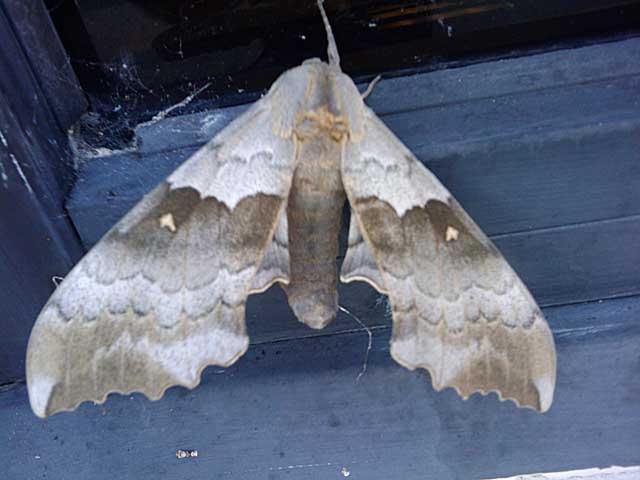
Pachysphinx occidentalis male, Tustin, Orange County, California,
May 4, 2010, courtesy of Jordan Craig.
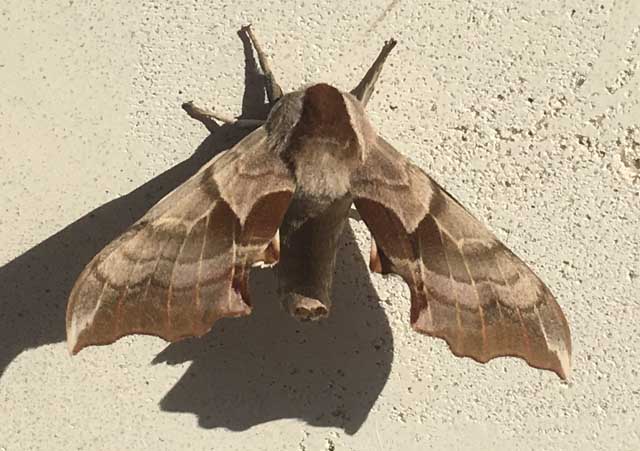
Smerinthus saliceti, San Clemente, Orange County, California,
September 4, 2016, courtesy of Monika Burke.
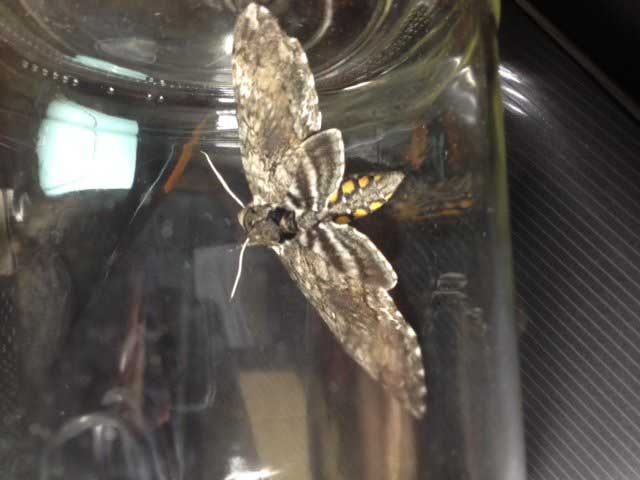
Manduca sexta sexta, Brea, Orange County, California,
May 4, 2014, courtesy of Joyce.
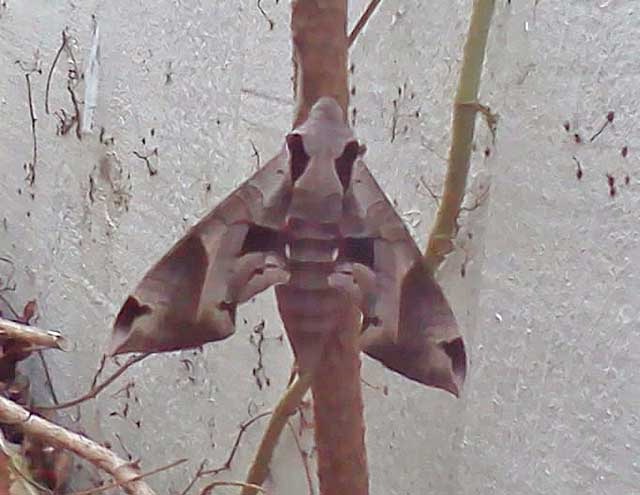
Eumorpha achemon, Laguna Canyon, Orange County, California,
July 8, 2014, courtesy of Alida Cervera.
I reply, "I suspect the vines were grape vines, a common foodplant of Eumorpha achemon."
Visit Orange County Sphingidae Larvae (Caterpillars).
Visit California Catocala: Underwing Moths
Sphinginae subfamily
Smerinthini Tribe:
Macroglossinae subfamilyDilophonotini Tribe:
Philampelini Tribe:
Macroglossini Tribe:
Hyles lineata, Huntington Beach, April 7, 2012, courtesy of John Prince
|
Enjoy some of nature's wonderments, giant silk moth cocoons. These cocoons are for sale winter and fall. Beautiful Saturniidae moths will emerge the following spring and summer. Read Actias luna rearing article. Additional online help available.
Use your browser "Back" button to return to the previous page.
This page is brought to you by Bill Oehlke and the WLSS. Pages are on space rented from Bizland. If you would like to become a "Patron of the Sphingidae Site", contact Bill.
Please send sightings/images to Bill. I will do my best to respond to requests for identification help.
 Show appreciation for this site by clicking on flashing butterfly to the left. The link will take you to a page with links to many insect sites. |